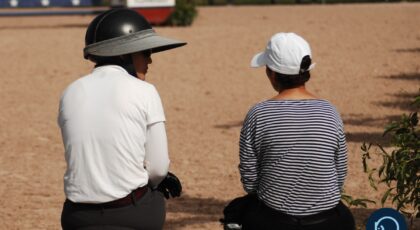Last week, two horses I had worked with extensively and knew quite well, died suddenly within 24 hours of each other. They both literally dropped to the ground, right before their owner’s eyes, without warning and were gone in an instant. One of these horses was an older Arabian mare and the other a 9-year-old Morgan gelding.
Having worked with these horses myself not too long ago, I knew they were both sound, seemingly healthy and well-cared for. So how could this happen?
The answer was right there all along: Yew.
Taxus is a genus of small coniferous trees or shrubs in the yew family. There are several varieties of yew native to landscapes all over the world, each highly toxic to horses. Sure enough, yew was found sprouting on the horse owner’s property, accessible from the front pasture where the gelding lived. When the gelding died, before the Yew was discovered, that pasture was opened up so the mare he shared it with could interact with the other two mares in the adjacent pasture. The next day, one of those mares died. The owners had no idea what Yew looked like or that it was even toxic, and there are no mature Yew on the property. The sprouting yew was likely the result of seeds left behind by birds who feasted on the fruit from a neighboring property.
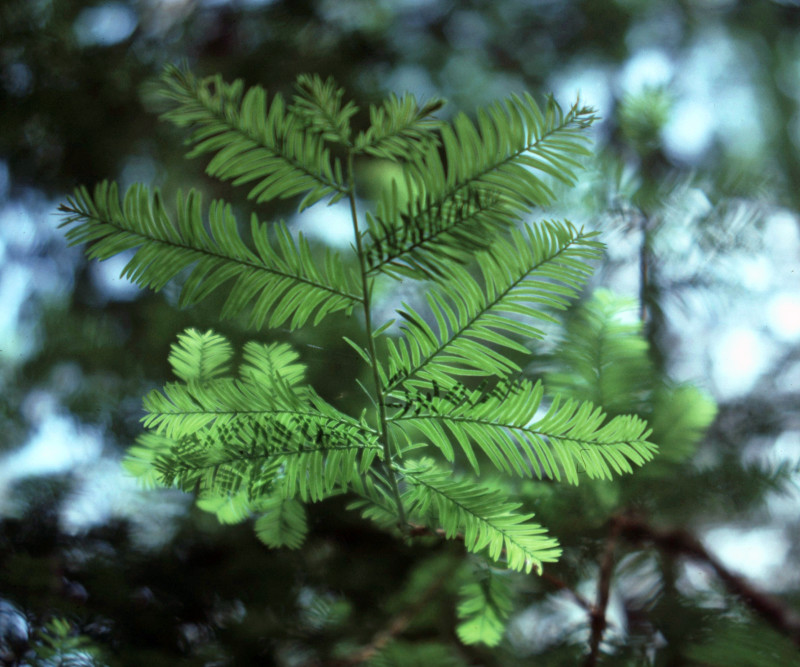
Florida Yew (Taxus floridana)
This plant is often used as a shrubbery in landscaping and is even sometimes used to make Christmas wreaths. It can find its way into wood chips and grass trimmings and can sprout in a pasture from seeds dropped by birds, as appears to be the case in this particular instance.
Spring is dangerous time for horse and livestock farmers as potentially hazardous plants can invade pastures seemingly out of nowhere. It’s also the time of year horses are seeking out new growth for forage. Fall is also a very worrisome time as plants start to drop leaves and needles forage starts become more scarce.
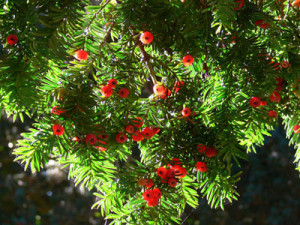
Yew seeds are set inside a reddish, fleshy, cup-shaped, berry-like fruit.
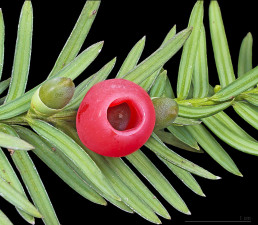
This helpful fact sheet from the Ontario Ministry of Agriculture, Food and Rural Affairs lays out the clinical signs of yew poisoning in horses, as well as how to identify potentially toxic foliage.
Clinical Signs
Sudden death, often within 2-3 hours of ingestion, is the most common observation with yew poisoning. Animals are often found dead next to yew bushes or clippings. Prior to death, muscle trembling, incoordination, nervousness, difficulty breathing, slow heart rate, diarrhea and convulsions may be observed. No post-mortem signs are specific to yew poisoning, unless partially digested twigs and needles are found in the mouth and stomach. There is no specific treatment or antidote for yew poisoning. Supportive therapies have variable success rates, depending on the amount of yew ingested and how quickly actions are taken.
I am posting this as a warning to everyone to be aware of plants that are toxic to horses and to know what to to look for as it takes VERY little Yew to kill an adult horse (6-8 ounces of fresh plant can kill an adult horse in less than 5 minutes). It’s never a bad idea to contact your local Extension office or expert to examine current or future pastures.
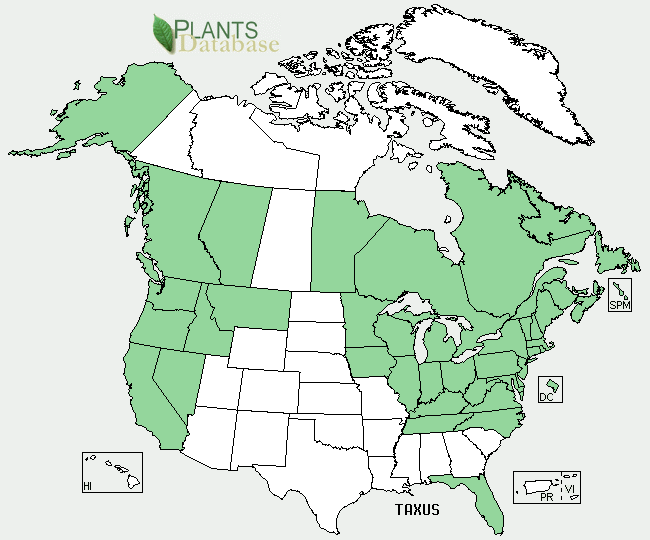
Yew toxicity map, North America. (via horsedvm.com)
No horse owner should ever have to experience such an event, and by sharing this information perhaps some good can come from this tragic loss.


 February 17, 2016
February 17, 2016 















